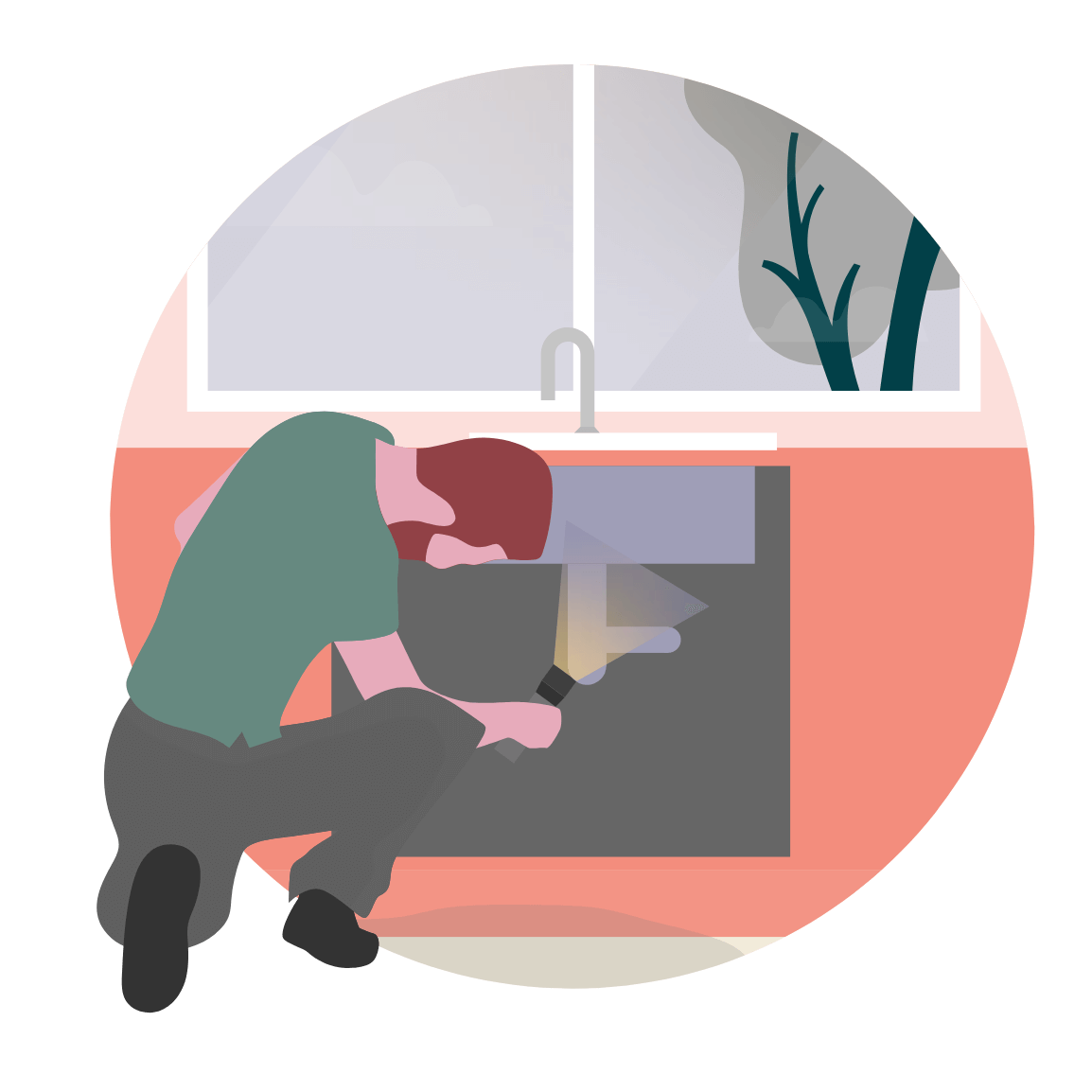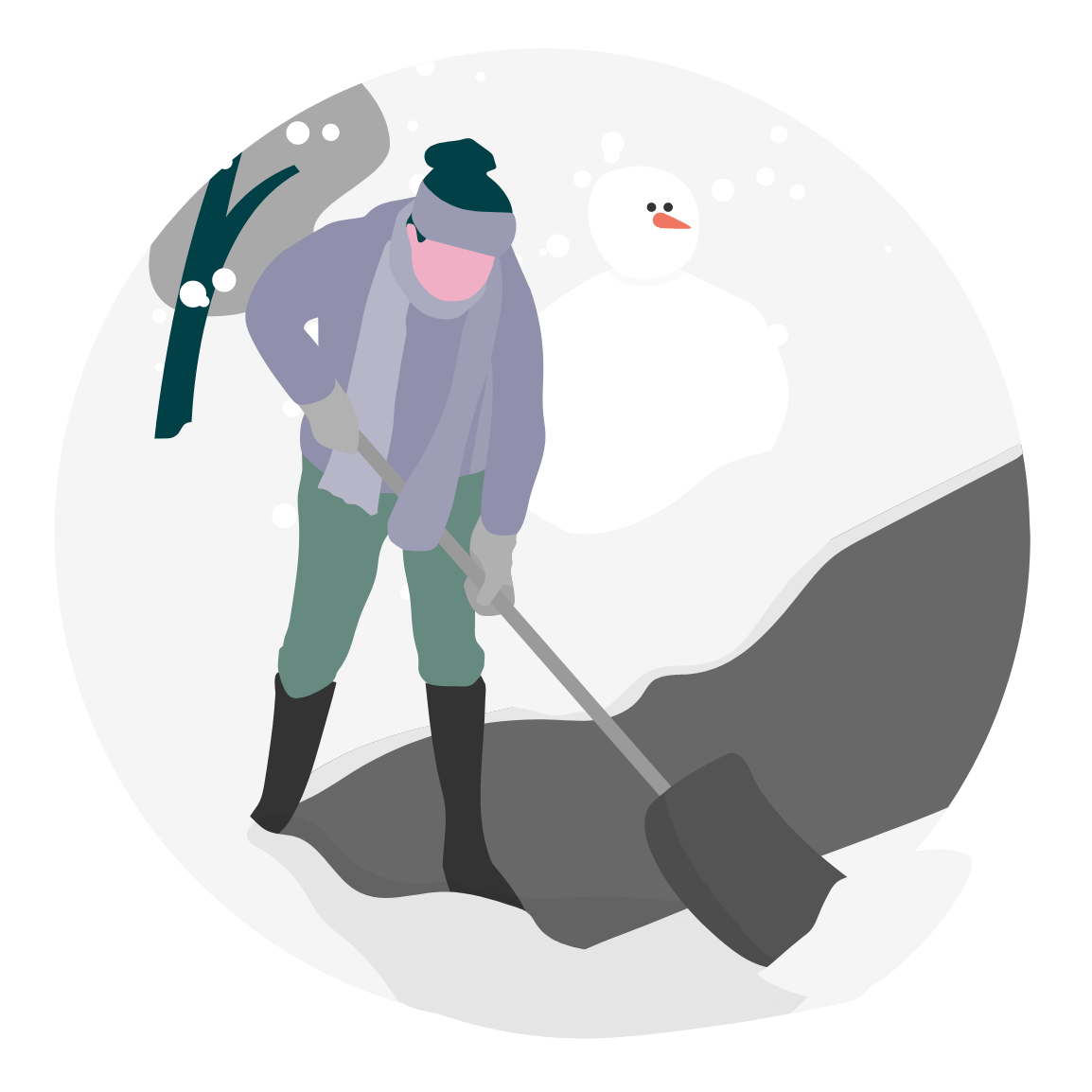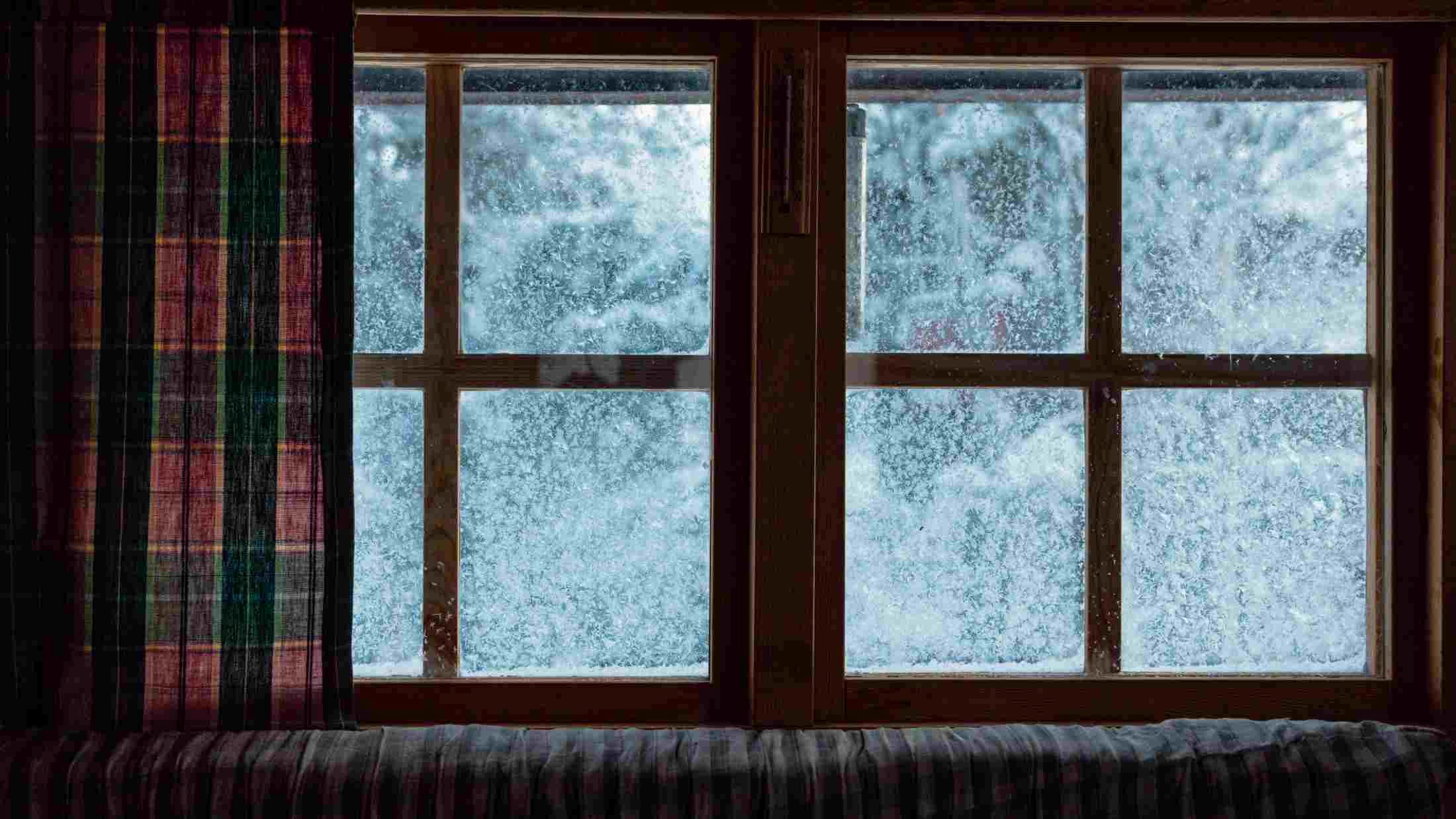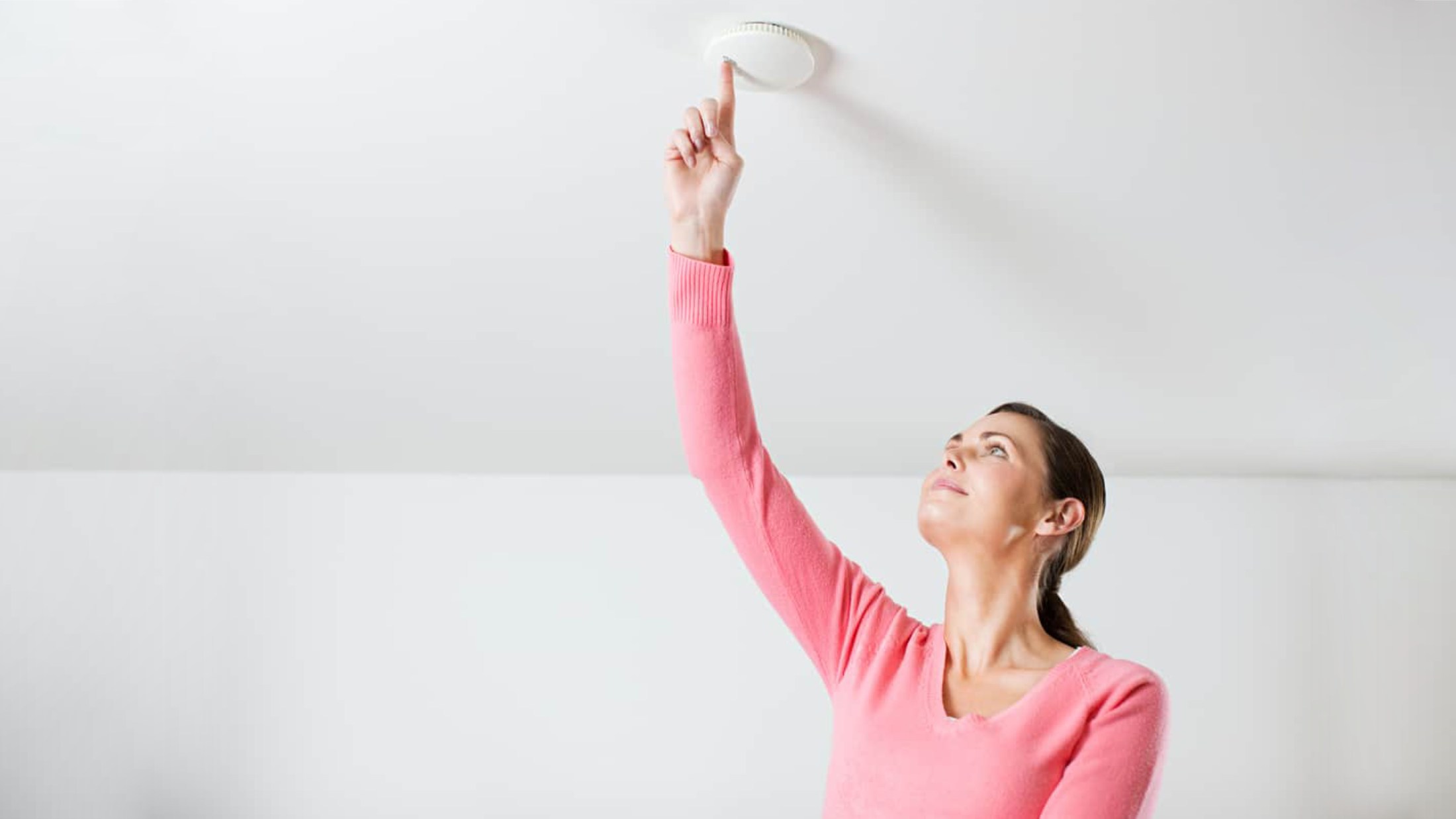From snowmen to sledging, there’s plenty of things that make winter a special time of year.
And as Jack Frost nips the air, there’s snow place like home to keep cosy and warm as the weather outside turns frightful.
So how can you protect your property against freezing conditions? With frozen pipes and water damage just the tip of the iceberg, it’s easy to have a meltdown at the thought of a mammoth maintenance to-do list. That’s why we’ve rounded up some of our top tips to help make your home safe against the winter chill, from the inside out.
In this guide:
- Pre-snow and frost checks
- What to do when freezing weather is in full swing
- What to do when the weather begins to thaw
Pre-snow and frost checks
Get roof ready
Aim to get your roof inspected by a professional at least twice a year. Look out for debris from broken slates or tiles on the ground around your home, and keep your eyes peeled for leaning chimneys. These are both tell-tale signs that your roof needs some TLC.
Getting roof problems rectified sooner rather than later could help prevent further damage to your home and your wallet.

Protect your pipes
The chilly climate can wreak havoc on your home’s pipes, inside and out. To prevent them from freezing as it gets cooler, insulate external pipes (where possible) with weather-resistant insulation, as well as those in unheated internal areas like crawl spaces, garages, and lofts.
Heads up for header tanks
If your header tank is stored in your loft, make sure it’s properly insulated against the elements. If you don't, the water in the tank could freeze and expand in cold temperatures, leading to splits and cracks in its walls. Once the ice begins to thaw, the resulting water could leak into your home below, which could prove costly.
If a cold snap is forecast, check your tank for signs of wear and tear. If you spot an issue, get it sorted as quickly as you can.
Ditch the draughts
Invest in weather stripping to help keep warm air in, and chilly draughts out. It’s easy to fit and cheap to purchase, and can even help improve the heat efficiency of your home.
Windows, doors, vents, fans, letterboxes, and mains supply lines tend to be the most common areas for air leaks. Keep these prime suspects in mind during your draught-excluding investigation.
Get your mitts on some grit
From David Plowie and Gritney Spears, to Luke Snowalker and Gritsy Bitsy Teeny Weeny Yellow Anti-Slip Machiney, Britain has arguably the best named gritters in the world. These gritters work to keep our roads ice-free in the winter months. But it’s a good idea to build your own stash of sand and grit, too. Use it with your snow shovel to keep your property’s paths and steps safe in freezing conditions. Nicknames for your private grit collection are optional!
Guard your green space
Frost can be fatal to your plants. Bring potted ones inside and mulch outdoor plants. Clear away garden hoses, furniture, and toys to prevent them from becoming obstacles in heavy snow.
It’s also a good idea to prune back any overhanging branches that are likely to collect snow.The added weight could cause them to break, which could result in damage to other areas of your property.
Keep your mind in the gutter
If gutters are blocked with leaves and dirt before snowy or icy conditions hit, then water can’t flow through them freely. This means that when the temperature drops, large bodies of trapped water could freeze up, with the additional weight putting an extra strain on your roof and gutters.
To prevent damage, set aside time in spring and late autumn to make sure your gutters are gleaming.
Fireplaces
If you’re lucky enough to be able to chill out and watch the flames dance in your fireplace, cleaning should be a burning issue before winter arrives.
Clean out your chimney to remove soot, blockages, and built-up creosote to help improve the air ventilation of your room.
This is also a great opportunity to check smoke and carbon monoxide alarms. Replace batteries every 12 months, and detectors every 10 years.
Park up
If possible, keep your vehicles in a garage or under cover. If you need to park out in the open, make sure your vehicle is away from buildings and trees, where falling clumps of snow or ice could result in some nasty damage.
Show your loft some love
It’s important your loft is properly insulated and ventilated. If it’s too warm during snowfall, it can result in the formation of an ice dam. This is when snow melts quicker on the upper, hotter part of the roof, and the resulting water runs toward the colder eave and freezes into ice, blocking the guttering.
As this ridge of ice builds up, it can back up under the roof shingles where it melts again. When this happens, it causes damage to walls, ceilings, attics, insulation and, in worst case scenarios, living spaces.
If you feel your loft isn’t insulated well, ask a professional to help.
Stock up
Whenever bad weather is forecast, the first thing many people do is rush to the shops to get their hands on milk, bread, and toilet rolls. Avoid the retail rush by keeping a home emergency kit on hand. That way you can stay cosy and calm if the weather worsens.
Your home emergency kit should include:
- non-perishable food
- drinking water
- spare batteries
- a torch
- first aid kit
- warm, water-proof clothing
- blankets
- important insurance documents
- instructions on how to turn off mains supplies
- emergency contact numbers.
What to do when freezing weather is in full swing

Keep your home hot
Try to keep the heating on. This will keep your home warm and water running through your pipes. If you know you’re going to be out and about when the temperature drops, consider setting a timer for your heating to help keep everything ticking over smoothly.
Settling down in front of your open fire to ride out the worst of the weather?
- Seasoned hardwood will reduce creosote build-up.
- Use a fire screen to control flying embers.
- Never put ashes in with the rubbish.
Don’t panic about pipes
When it’s freezing outside, burst pipes can be one of the biggest risks to your interiors. So, if a cold snap's forecast, leave the cabinet doors under sinks open to allow heat to circulate and help prevent any potential pipe problems.
If the worst does happen, there’s plenty you can do to prevent any further damage. Here’s what you need to know:
How to thaw out frozen pipes
- Check for leaking joints or bursts in the pipes. Do not attempt to thaw out frozen pipes by turning on your central heating boiler.
- Once you’ve located any frozen sections, gently heat with a hot water bottle, hairdryer, or heated cloth.
Got a burst pipe?
- Turn off the water at your stop valve as quickly as you can. If you have a major leak, it’s a good idea to turn off your electricity mains too.
- Turn on all cold taps to drain the system. Never turn on the hot taps. Your hot water cylinder may collapse if the pipes on its route are frozen.
Remember, if you’re unsure about doing this on your own, seek the help of a professional plumber.
Keep it clear
A snow shovel and a stash of grit will be your most effective combination to keep the paths and stairs around your property clear, safe, and ice-free. In the event of heavy snowfall, try to remove build-ups (if it’s safe to) so you can get in and out of your home easily.
Stay on weather watch
Listen out for weather updates across TV and local radio, and keep an eye on the Met office’s weather warnings. Their forecasts will tell you when the worst of the weather will pass, or help you decide whether you need to consider changing your plans as the situation deteriorates.
Remember, you should only drive in winter weather if it's absolutely necessary.
What to do when the weather begins to thaw

Assess the situation
Once it’s safe to go outside, it’s time to inspect how your property has fared against the winter bite.
Start by checking for frozen pipes outside your home, and begin clearing the surrounding paths. Use grit and salt to prevent ice and frost from reforming.
When it comes to your roof, never inspect it on your own as it's likely to be too precarious. Instead, take a ground’s eye view and if you suspect your guttering is blocked or an ice dam has formed, call in the professionals.
If the worst happens
No matter how much you prepare, sometimes damage from winter weather is unavoidable.
If your property's damaged by wintry conditions, get in touch with your home insurer as soon as you can. They’ll give you advice on next steps, and ask you to snap plenty of photos of the damage.
You might want to keep references of the adverse weather – such as newspaper clippings and online articles – as further evidence of how your area was affected by the freezing conditions.
If there’s significant damage to your home, the quicker you act by arranging emergency repairs, the better. Always keep receipts as proof for your insurer.
Take time to reflect
When your house is shipshape once again, consider updating your home emergency plans and kit. It’s also worth considering whether the current level of home insurance meets your needs, or whether it’s time to enhance your cover for additional peace of mind.
If you’re an AXA customer, you can check what you are and aren’t covered for in your policy documents. You’ll find them in your online account.












